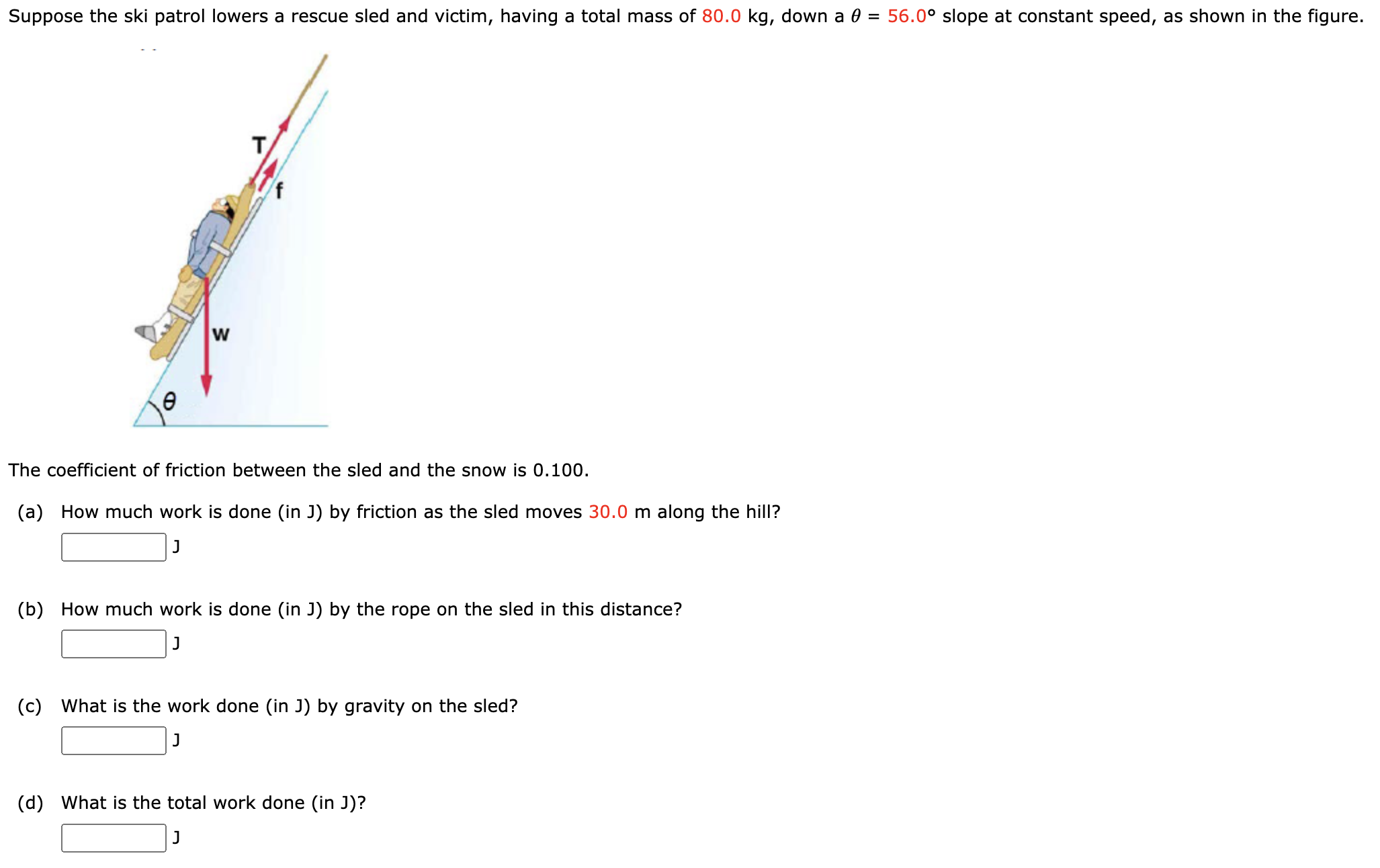Suppose the ski patrol lowers a rescue sled and victim, having a total mass of 80.0 kg, down a θ = 56.0∘ slope at constant speed, as shown in the figure. The coefficient of friction between the sled and the snow is 0.100 . (a) How much work is done (in J) by friction as the sled moves 30.0 m along the hill? J (b) How much work is done (in J) by the rope on the sled in this distance? J (c) What is the work done (in J) by gravity on the sled? J (d) What is the total work done (in J)? J
